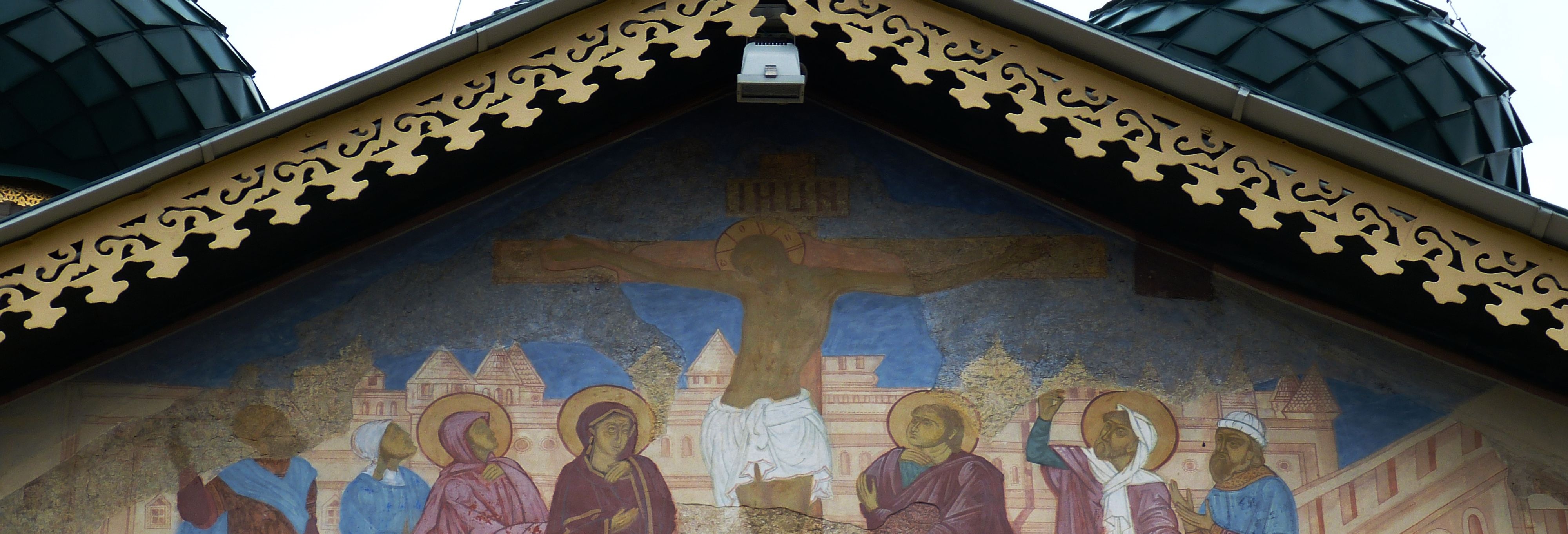
Secular imagined communities? The entanglements of Europe’s national and religious identities
Anna Triandafyllidou, Ryerson University, Toronto
Tina Magazzini, European University Institute, Florence
April 15, Friday
After almost two months of conflict in Ukraine, as the initial shock morphs into a daily bulletin of deaths, one of the many casualties of Russia’s war of aggression appears to have been interreligious dialogue. Andrii Yurash, Ukraine’s Ambassador to Italy, recently voiced his concern about the idea proposed by the Pope of bringing Russian and Ukrainian women together for Easter to jointly carry the Cross during the Via Crucis at the Colosseum for Good Friday. Beyond the unease that some feel towards the optics of what could be seen as putting Ukrainians and Russians on the same footing, the war has also driven a deep wedge into the Orthodox Church, with many bishops of the Ukrainian Orthodox Church (UOK) distancing themselves from Moscow after Patriarch Kirill, the head of the Russian Orthodox Church, endorsed the invasion in no ambiguous terms.
These unfolding events raise issues that have long been the object of sociological and political enquiry, and that remain as relevant as ever: What is the relationship between religious membership and the alliance to a nation-state? How can we apprehend and better understand such alliances and identities, and how have they been changing and evolving in contemporary Europe?
A EU-funded study corroborates the notion that secularisation in Europe continues to be on the rise, with religion sharply declining as a salient identity— especially for majorities. Yet, many Europeans (belonging to both majorities and minorities) experience their belonging to a community of faith more as a cultural affiliation than a religious one. Such cultural identity (especially when perceived as being under threat by changing demographics or by demands that challenge conservative family values) can constitute a powerful rallying flag in its own right, as recent elections in Hungary have shown.
Against this backdrop, the GREASE project has mapped the various models of governance that European countries have adopted to deal with both their old and new religious minorities, and with religion more broadly. This, in turn, raises philosophical and practical questions about whether it is better to equalise upwards (with more religion in public life for both majorities and minorities) or equalise downwards (relegating religious expressions to the private sphere). In short, how strict should the separation between state and religious institutions be? And beyond the struggle for a peaceful coexistence, what can be said to constitute ‘successful’ religious diversity governance?
In order to map the relationship between religious membership and the alliance to a nation-state across 15 different countries, we have looked at two aspects: the strength of state-religion linkages (how much is the nation identified with a given religious community; which can result in strong or weak ties, and in ties with a single religion or with multiple religions) and the demographic composition of each country (the degree of homogeneity in terms of religion in a given country).
Another important aspect intertwined with the strength of state-religion ties and religious homogeneity of the resident population is the different existing models of religious diversity governance in Europe: in other words, how different countries manage religion and religious diversity both in law and practice.
What we found in the European context is that three main models are present.
One is absolute secularism, which entails the shunning of religion from the public space and is adopted by France, despite it being home to the largest Muslim and Jewish populations in the European Union. A second model, which captures most European countries, is that of moderate secularism, in which some degree of religious accommodation is granted by the state to organized religions, without an historic national identity controlling or being subordinated by it. A third model, reflected by Bosnia and Herzegovina and Turkey, strongly regulates and/or incorporates religion into the country’s political and institutional setting, and can therefore be labelled as a mode based on the primacy of religion.
On the whole, even though there is no generalisable model that can serve as a ‘best practice’ for all cases, nor can any single element explain a country’s relationship to religious diversity, what clearly emerges is that religion, as any other cultural identity dimension, can be politicized and instrumentalized for partisan goal. This is true not only in cases where religious sentiment is especially strong, but can also apply in instances where the issue of religious governance is seen in problematic terms when it comes to addressing the claims and rights of religious minorities, such as in France.
If religious identities can be harnessed politically to divide and exclude, however, they also have the potential to be powerful bridges that bring communities together, celebrate diversity and foster dialogue. As not only Easter, but also Jewish Passover and Ramadan take place in synchrony this year, one can hope that the core values of compassion, spiritual growth and renewal that underpin all celebrations might be adopted in the struggle for peace, between and within religious communities.
Acknowledgements: This article is based on ‘Governing Religious Diversity in Europe’ by Anna Triandafyllidou (Ryerson University, Toronto) and Tina Magazzini (European University Institute), to appear in Effie Fokas and Alberta Giorgi (eds) Handbook on Religion and Politics in Europe, London: Routledge. This blog has benefitted from Horizon 2020 funding for the GREASE project contract no. 770640. For project website see http://grease.eui.eu/


